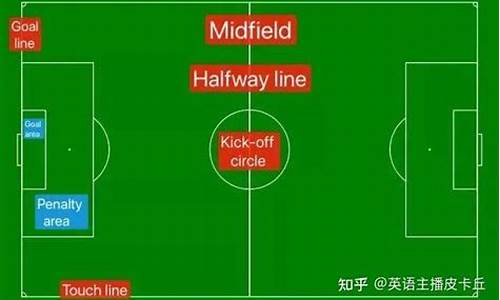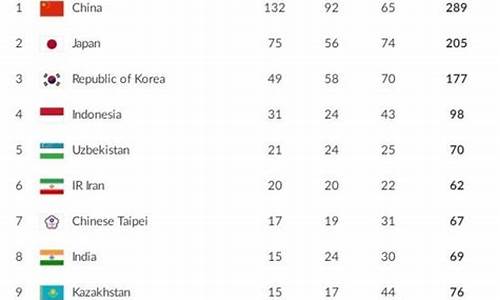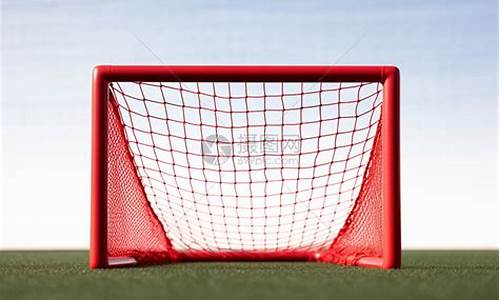足球英语界外球_足球界外球技巧

部分球队英文名Arminia Bielefeld★Eintracht Frankfurt★Borussia Dortmund★Bayer Leverkusen★FC Schalke★VfB Stuttgart★Hamburger SV★Hannover★Werder Bremen★MSV Duisburg★Hertha BSC Berlin★Karlsruher★FC Nunberg★VfL Wolfsburg★FC Energie Cottbus★Hansa Rostock
liverpool★chelsea★west ham★everton★blackburn★manchester city★newcastle★wigan★aston villa★birmingham★middlesbrough★sunderland★portsmouth★fulham★tottenham★reading★botton★
场地名称篇
field / pitch 足球场
midfield 中场
backfield 后场
kickoff circle / center circle 中圈
halfway line 中线
touchline / sideline 边线
goal line 球门线
end line 底线
penalty mark (点球)罚球点
penalty area 禁区(罚球区)
goal area 小禁区(球门区)
球队称谓篇
coach 教练
head coach 主教练
football player 足球运动员
referee 裁判
lineman 巡边员
captain / leader 队长
forward / striker 前锋
midfielder 前卫
left midfielder 左前卫
right midfielder 右前卫
attacking midfielder 攻击型前卫(前腰)
defending midfielder 防守型前卫(后腰)
center forward 中锋
full back 后卫
center back 中后卫
left back 左后卫
right back 右后卫
sweeper 清道夫,拖后中卫
goalkeeper / goalie 守门员
cheer team 拉拉队
足球技术篇
kick-off 开球
bicycle kick / overhead kick 倒钩球
chest-high ball 半高球
corner ball / corner
goal kick 球门球
handball 手球
header 头球
penalty kick 点球
place kick 定位球
own goal 乌龙球
hat-trick 帽子戏法
free kick 任意球
direct free kick 直接任意球
indirect free kick 间接任意球
stopping 停球
chesting 胸部停球
pass 传球
short pass 短传
long pass 长传
cross pass 横传
spot pass 球传到位
consecutive passes 连续传球
take a pass 接球
triangular pass 三角传球
flank pass 边线传球
lobbing pass 高吊传球
volley pass 凌空传球
slide tackle 铲球
rolling pass / ground pass 地滚球
flying header 跳起顶球
clearance kick 解围
shoot 射门
close-range shot 近射
long shot 远射
offside 越位
throw-in 掷界外球
block tackle 正面抢截
body check 阻挡
fair charge 合理冲撞
diving header 鱼跃顶球
dribbling 盘球,带球
clean catching (守门员)接高球
finger-tip save (守门员)托救球
offside 越位
deceptive movement 假动作
break through 突破
kick-out 踢出界
足球战术篇 ranking 排名(名次)
set the pace 掌握进攻节奏
ward off an assault 击退一次攻势
break up an attack 破坏一次攻势
disorganize the defence 搅乱防守
total football 全攻全守足球战术
open football 拉开的足球战术
off-side trap 越位战术
wing play 边锋战术
time wasting tactics 拖延战术
4-3-3 formation 433阵型
4-4-2 formation 442阵型
beat the offside trap 反越位成功
foul 犯规
technical foul 技术犯规
break loose 摆脱
control the midfield 控制中场
set a wall 筑人墙
close-marking defence 盯人防守
比赛方式篇
half-time interval 中场休息
round robin 循环赛
group round robin 小组循环赛
extra time 加时赛
elimination match 淘汰赛
injury time 伤停补时
golden goal / sudden death 金球制,突然死亡法
eighth-final 八分之一决赛
quarterfinal 四分之一决赛
semi-final 半决赛
final match 决赛
preliminary match 预赛
one-sided game 一边倒的比赛
competition regulations 比赛条例
disqualification 取消比赛资格
match ban 禁赛命令
doping test 药检
draw / sortition 抽签
send a player off 判罚出场
red card 红牌
yellow card 黄牌
goal 球门,进球数
draw 平局
goal drought 进球荒
Football is the name given to a number of different, but related, team sports. The most popular of these worldwide (and by far the most popular sport worldwide) is association football, which can be abbreviated soccer. The English language word football is also applied to rugby football (rugby union and rugby league), North American football (American and Canadian), Australian rules football, and Gaelic football.
Some of the many different codes of football.While it is widely believed that the word football originated in reference to the action of a foot kicking a ball, there is a rival explanation, which has it that football originally referred to a variety of games in medieval Europe, which were played on foot.[1] These games were usually played by peasants, as opposed to the horse-riding sports often played by aristocrats. While there is no conclusive evidence for this explanation, the word football has always implied a variety of games played on foot, not just those that involved kicking a ball. In some cases, the word football has been applied to games which have specifically outlawed kicking the ball. (See football (word) for more details.)
All football games involve scoring with a spherical or prolate spheroid ball (itself called a football), by moving the ball into, onto, or over a goal area or line defended by the opposing team. Many of the modern games have their origins in England, but many peoples around the world have played games which involved kicking and/or carrying a ball since ancient times.
The object of all football games is to advance the ball by kicking, running with, or passing and catching, either to the opponent's end of the field where points or goals can be scored by, depending on the game, putting the ball across the goal line between posts and under a crossbar, putting the ball between upright posts (and possibly over a crossbar), or advancing the ball across the opponent's goal line while maintaining possession of the ball.
In all football games, the winning team is the one that has the most points or goals when a specified length of time has elapsed.
History
For the history of only Association Football, see History of football (soccer)
Throughout the history of mankind the urge to kick at stones and other such objects is thought to have led to many early activities involving kicking and/or running with a ball. Football-like games predate recorded history in all parts of the world, and thus the earliest forms of football are not known.
Ancient games
Documented evidence of what is possibly the oldest organized activity resembling football can be found in a Chinese military manual written during the Han Dynasty in about 2nd century BC.
It describes a practice known as cuju (Traditional Chinese: 蹴鞠; Simplified Chinese: 蹴踘; Pinyin: cù jū) which involved kicking a leather ball through a hole in a piece of silk cloth strung between two 30 foot poles. Another Asian ball-kicking game, which may have been influenced by cuju, is kemari. This is known to have been played within the Japanese imperial court in Kyoto from about 600 AD. In kemari several individuals stand in a circle and kick a ball to each other, trying not to let the ball drop to the ground (much like keepie uppie). The game survived through many years but appears to have died out sometime before the mid 19th century. In 1903 in a bid to restore ancient traditions the game was revived and it can now be seen played for the benefit of tourists at a number of festivals.
Mesoamerican ballgames played with rubber balls are also well-documented as existing since before this time, and are thought to have resembled football in their earlier versions; but since later versions have more similarities to basketball or volleyball, and since their influence on modern football games is minimal, most do not class them as football.
The Greeks and Romans are known to have played many ball games some of which involved the use of the feet. The Roman writer Cicero describes the case of a man who was killed whilst having a shave when a ball was kicked into a barbers shop. The Roman game of Harpastum is believed to have been adapted from a team game known as "επισκυρο?" (episkyros) or pheninda that is mentioned by Greek playwright, Antiphanes (388-311BC) and later referred to by Clement of Alexandria. The game appears to have vaguely resembled rugby.
There are a number of less well-documented references to prehistoric, ancient or traditional ball games, played by indigenous peoples all around the world. For example, William Strachey of the Jamestown settlement is the first to record a game played by the Native Americans called Pahsaheman, in 1610. In Victoria, Australia, Indigenous Australians played a game called Marn Grook. An 1878 book by Robert Brough-Smyth, The Aborigines of Victoria, quotes a man called Richard Thomas as saying, in about 1841, that he had witnessed Aboriginal people playing the game: "Mr Thomas describes how the foremost player will drop kick a ball made from the skin of a possum and how other players leap into the air in order to catch it." It is widely believed that Marn Grook had an influence on the development of Australian rules football (see below). In northern Canada and/or Alaska, the Inuit (Eskimos) played a game on ice called Aqsaqtuk. Each match began with two teams facing each other in parallel lines, before attempting to kick the ball through each other team's line and then at a goal.
These games and others may well go far back into antiquity and have influenced football over the centuries. However, the route towards the development of modern football games appears to lie in Western Europe and particularly England.
声明:本站所有文章资源内容,如无特殊说明或标注,均为采集网络资源。如若本站内容侵犯了原著者的合法权益,可联系本站删除。












